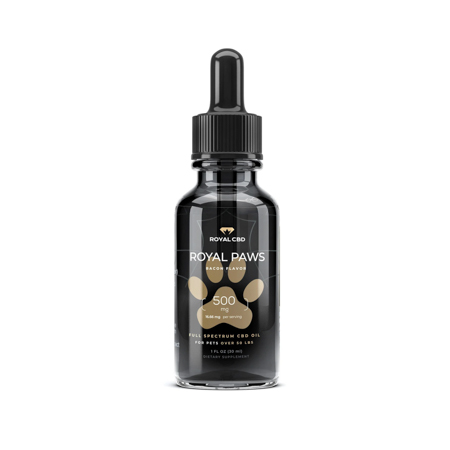

What Can I Give My Dog for Pain Relief? Best Natural Remedies
Seeing your dog in discomfort can be heartbreaking. Here we explore the best remedies that you can give your dog for pain.
Featured photo Khakimullin Aleksandr/shutterstock.com
In Partnership with Buzz PR
People usually come to a veterinarian asking “what can I give my dog for pain?”
Most searches with Google lead to websites with all sorts of painkillers claiming to bring relief to your pup’s discomfort.
However, please keep in mind that not every potential pain treatment is safe for dogs. While there are several acknowledged medications for dogs with pain, many “remedies” can do more harm than good.
Every dog is different, so what works for your pet may not work for another one. Today, more people than ever are turning to natural alternatives for relieving pain in dogs.
Things like physical therapy, herbal supplements, exercise, and proper diet seem to be working better than conventional options in most cases.
In this article, we’ll show you a few potential remedies you may give your dog for pain, all of which include holistic solutions.
Best Natural Remedies & Holistic Options for Dogs with Pain
Photo Kittima05/shutterstock.com
The lack of efficacy in treating pain with conventional medications has made many dog parents turn to holistic remedies. Holistic treatment can help ease your dog’s discomfort and is much safer than man-made drugs. There are several natural remedies to choose from. Some of the most popular products to give your dog for pain include fever and turmeric.
Supplements infused with CBD ingredients are easily available locally, but many trusted publishers recommend that we get them online. Turmeric comes in a wide range of pet-appropriate forms, which is a good thing for good parents considering the potent anti-inflammatory effects and the ability to boost one’s immune system without potential unwanted effects.
On top of turmeric and feverfew, you may want to try the following herbal supplements:
- Arnica Montana
- Boswellia
- Devil’s Claw
- Ginger
- Green Lipped Mussels
- St. John’s Wort
- Yucca
All of these options possess natural anti-inflammatory and pain-relieving properties.
Besides herbal supplements, you may also want to add treatments like physical therapy, acupuncture, massage, hydrotherapy, and aromatherapy in addition to CBD to further comfort your dog. There’s also one natural remedy whose positive influence on the overall health of dogs is recommended by many holistic veterinarians.
Many dog parents decide to give their dogs CBD oil for pain. Is there any science to back it up?
CBD Oil for Pain Relief in Dogs
CBD oil is one of the most popular health supplements in the wellness industry. It has a wide range of health benefits due to its interaction with the mammalian endocannabinoid system (ECS).
This is why CBD oil is also an effective remedy for a variety of pain in dogs, including canine osteoarthritis.
Both humans and dogs have an ECS, so they both respond to exogenous cannabinoids such as CBD. Better yet, CBD oil is well tolerated by dogs even in very high doses. There have been no clinical reports of fatal overdoses on CBD, nor there have been any mentions of severe side effects.
CBD oil is available in many forms, such as tinctures, pet treats, and topical treatments.
Below we cover everything you need to know about giving CBD oil to dogs with pain — explaining the mechanism of action.
Best CBD Oils for Dogs with Pain, Anxiety & Arthritis
The CBD market has matured and looks incomparably better than what it was a few years ago — but it’s still unregulated.
This means that there’s an equal number of high-quality companies and fly-by-night vendors. It’s the consumer’s responsibility to research every potential vendor before giving CBD oil to their dog.
The best CBD oils for dogs are made from organic hemp, extracted with supercritical CO2, and fully tested for potency and purity in a third-party laboratory — something which every company out there claims to do.
In a rush? Here are the two companies that make the best CBD products for pets in terms of quality, flavor, and transparency
1. Royal CBD
Royal CBD is a California-based brand known for its broad selection of award-winning CBD products for humans. Recently, one of the most reputable players on the scene has expanded its collection with pet products, including CBD oil and dog treats.
The Royal Paws CBD oil has been formulated with the full spectrum of cannabinoids and terpenes to help dogs benefit from the entourage effect. You can choose from three strengths: 125 mg (small dogs), 250 mg (medium dogs), and 500 mg (large dogs). Each of these options comes in the beloved flavor of all dogs — bacon.
The oil is suspended in organic hemp seed oil to provide your dog with essential fatty acids that improve the absorption of CBD on top of boosting its anti-inflammatory properties.
If your dog fusses over the flavor of CBD oil, Royal CBD has 3 types of dog treats infused with cannabidiol: Active (with turmeric and boswellia), Calming (with L-theanine, and chamomile), and Hearty (with blueberries and flaxseed). Each treat contains 5 mg of full-spectrum CBD.
2. Gold Bee
Gold Bee specializes in organic CBD oil products infused with different superfoods, such as honey, chamomile, or flaxseed. The company has openly said that its CBD oil is appropriate for dogs due to its concentrations (600 mg and 1200 mg), so the dog owners simply need to level down the dosage to adjust them to their pup’s needs. But since the dogs are strict carnivores, we suggest that you get them the unflavored version (the KIWI option is flavored with honey).
Aside from its CBD oil, Gold Bee has some pet-dedicated treats. You can order Gold Bee Dog Treats in tantalizing peanut butter & apple flavor. The treats feature a calming formula containing 5 mg of full-spectrum CBD combined with chamomile and L-theanine.
What Is CBD and How Does It Work?
CBD is the acronym for cannabidiol—one of the major active compounds in cannabis plants next to THC.
But, unlike THC, CBD doesn’t get you high because it doesn’t have intoxicating properties.
This makes CBD safe for humans and dogs alike.
As mentioned earlier, dogs and humans have the same endocannabinoid system, which helps the body maintain homeostasis between its major biological functions, such as (4)
- Memory
- Mood
- Immune function
- Neuroprotection
- Reproduction
- Body temperature
- Pain perception
- Motor functions
- Appetite
- Sleep cycle
The ECS produces its own neurotransmitters called endocannabinoids; they work in the body to maintain the aforementioned balance. However, endocannabinoids are relatively short-lived, and the ECS doesn’t store them for later.
This is when the body becomes deficient in cannabinoids. Researchers have linked these deficiencies to different types of chronic pain, such as migraines, fibromyalgia, and neuropathic pain.
It turns out that CBD can level these deficiencies by stimulating the natural production of endocannabinoids on top of increasing their duration in the bloodstream. CBD interacts with the ECS through the cannabinoid receptors as well as on several receptor-independent routes.
When it comes to using CBD for pain, it has a multifaceted mechanism. For one, it can block the release of the pro-inflammatory compounds called cytokines. By reducing their number, CBD can reduce inflammation and ease the discomfort in your dog (5).
CBD also interacts with the TRPV1 vanilloid receptor, which controls the transmission of pain signals. The receptor has been named after essential oils from vanilla that have been used in folk medicine to treat pain (6).
Finally, CBD increases the levels of anandamide, one of the naturally occurring endocannabinoids. High levels of anandamide are linked to greater mood stability and a higher pain threshold (7).
Looking for the best type of CBD oil to give to your dog?
Below we take a look at the most effective formats.
How to Use CBD Oil for Pain Relief in Dogs
You can give CBD oil to your dog with pain, but you can also use a topical if you want to approach the problem from a different perspective.
Here’s how these products work.
CBD oil contains a hemp extract suspended in a food-grade carrier oil. The oil increases the product’s volume and improves the absorption of CBD. It comes in dark bottles with a dropper that helps you measure out the right dose for your dog. The oil absorbs through tiny blood vessels under the tongue, producing its effects within 20–30 minutes.
If your dog is unwilling to take CBD oil due to its botanical taste, you can try out some CBD dog treats. These products come with a fixed dose of CBD in each piece, not to mention that they are made into various tasty flavors, such as peanut butter, cheese, or bacon. CBD dog treats take longer to kick in than the oil — usually 40–60 minutes.
Topical CBD works from another angle. When you give CBD cream to your dog, it absorbs through the skin, engaging with the CB2 cannabinoid receptors in its epidermis layer. From there, it produces its anti-inflammatory and pain-mitigating effects, providing relief from localized discomfort. CBD topicals also have moisturizing, revitalizing, and antioxidant properties to protect your dog’s skin against environmental damage.
Topical CBD is available in a range of formulas, including creams, lotions, balms, ointments, shampoos, and gels.
CBD Dosage for Dogs with Pain
Every dog is different; you should keep that in mind before giving CBD oil to your dog for pain.
CBD oil is a plant-based extract that contains over 400 compounds, of which 113 are active ingredients.
Things like your dog’s size, age, gender, physical activity levels, and overall health will affect the CBD dosage.
For daily supplementation, a good approach is to start with 1–2 mg of CBD for every 10 pounds of your dog’s weight. You can observe the effects after each dose and keep a dosage journal where you’ll write your observations down. Sometimes, CBD may need 2 weeks to start working, but you can gradually increase the dose after one week if you don’t see a difference in your dog’s pain.
If you plan to address a specific condition with CBD, we recommend checking the studies conducted in this subject; you can compare the dosages applied in different studies and give them to your dog for pain to see how they work.
Is CBD Safe for Dogs?
Photo photoboyko/bigstock.com
The World Health Organization issued a critical report on CBD in 2017, where they acknowledged it as a safe compound whose abuse potential is comparable to placebo. Studies investigating the efficacy and safety of CBD concluded that even doses like 1,500 mg administered daily don’t have life-threatening side effects.
That being said, there are a few mild reactions after high doses of CBD that you should be aware of, including:
- Dry mouth
- Changes in appetite
- Dizziness
- Lowered blood pressure
- Irritation
- Diarrhea
CBD is also known to interact with many medications. If your dog’s medication comes with a grapefruit warning on the container, you shouldn’t take it with CBD oil. CBD interacts with the enzymes in the liver that are responsible for processing drugs, which affects their concentration in the bloodstream. Sometimes, the interaction may cause a sub-therapeutic effect, and sometimes it may cause the drug to reach toxic levels.
Always consult a veterinarian before giving CBD oil to your dog for pain.
Signs that Your Dog Is in Pain
Seeing your dog in pain can be heartbreaking. Any kind of discomfort in the pet is also a huge stress for the parent. To make things worse, dogs are very resistant to pain, so it may be challenging to tell right away if your dog is in pain.
Dogs inherited this trait from wolves. Their wild ancestors considered it risky to show signs of weakness, as it was a clear signal to the enemy that they were vulnerable to attack. Wolves would often mask their pain to protect their social rank within the pack.
Although we have domesticated dogs, they still maintain some of their basic instincts from wolves. Therefore, they will hide the pain from their pet parents for as long as they can endure it.
When your dog shows noticeable signs of pain, the condition may have progressed to the point where it hit the wall.
Regular visits to a veterinarian may prevent, or help diagnose animal diseases, but you can also determine if your dog is in pain.
It’s actually not that difficult.
Signs that a dog is in pain include:
- Low energy
- A sagging tail
- Tired look
- Vocalizations (groaning, grunting, howling, whining, whimpering, yelping)
- Aggression (self-aggression or towards others)
- Low appetite
Dog owners often look for immediate pain relievers in desperation. Their first thought is usually “can I give my dog my medications for pain?”
Here we explain why you should never do it on top of covering the list of conventional pain treatments for dogs.
High-Risk Pain Treatments for Dogs
Photo Te9l/shutterstock.com
In this section, we cover popular over-the-counter (OTC) and prescription medications for humans that should never be given to dogs.
These medications include steroids, opioids, anti-inflammatory drugs, anticonvulsants, and more. They have been developed to deal with human pain specifically and thus are dangerous for dogs. The doses used by these drugs are tailored to the human weight.
NEVER give your dog the following painkillers:
- Acetaminophen
- Ibuprofen
- Naproxen
They are commonly used by people to combat early pain, but they should never be given to dogs under any condition.
Aleve for Dogs
You shouldn’t give aleve for pain in dogs because it contains Naproxen.
Naproxen is an active ingredient classified as a Non-Steroidal Anti-Inflammatory Drug (NSAID). It can cause adverse reactions in your dog.
Like we said, NSAIDs such as Aleve were invented specifically for human pain, including the ingredients and dosages. Despite being relatively safe for people, they are not suited for canine physiology and may thus cause severe health problems.
The Side Effects of Aleve
If your dog eats Aleve by accident, it may cause toxicity in your dog.
Some potential side effects to NSAIDs in dogs include (1):
- Diarrhea
- Depression
- Fatigue
- Kidney failure
- Liver failure
- Painful intestinal problems
- Gastrointestinal bleeding
- Weakness
- Death
These side effects should effectively stave you off from the idea of giving NSAIDs to your dog for pain.
Aspirin for Dogs
As mentioned earlier, a quick search in Google will spit out dozens of articles recommending various drugs for pain management in dogs. Aspirin is one of the most popular results when you type “what can I give my dog for pain?”
Your veterinarian may prescribe aspirin or baby aspirin for short-term pain relief from minor injuries or conditions. However, it should only be the coated aspirin, as it’s more tolerable for the dog’s stomach. Dog parents should also remember that the dosage should be adjusted to the dog’s weight and always consumed with food.
The Side Effects of Aspirin
You should also never give any kind of aspirin — even the baby aspirin — to your dog for the long-term treatment of any health condition, including pain.
Long-term use of aspirin may lead to (2):
- Allergy
- Bleeding stomach ulcers
- Clotting disorder
- Liver disease
- Kidney disease
- Uncontrolled high blood pressure
Ibuprofen for Dogs
Ibuprofen is another painkiller from the group of NSAIDs commonly available for humans. Unless overdosed, it's typically harmful to humans, but it’s definitely unsafe to give it to dogs.
Doctors usually prescribe ibuprofen for a wide range of ailments, from fever to inflammation to arthritis pain.
However, pet owners should always avoid NSAIDs when treating pain in dogs.
The Side Effects of Ibuprofen
Ibuprofen is toxic for dogs, causing severe adverse reactions such as:
- Gastrointestinal rupture
- Stomach ulcers
- Kidney failure
- Seizures
- Coma
- Death
Being a health-conscious dog parent means that you can distinguish between the medications designed for dogs and those made specifically for humans. We are different organisms that have different needs, and what’s effective for us, maybe devastating for the dog.
Opioids for Dogs
Opioids are used as a means of intervention for post-surgery pain. Alternatively, veterinarians use them to help the dog cope with pain in the advanced stage of cancer or to manage severe arthritis. However, they have a long list of dangerous side effects in long-term use.
The Side Effects of Opioids
They are highly addictive, but on top of that, they can wreak havoc on your dog’s health over time, causing (3):
- Frequent defecation
- Panting
- Coma
- Cardiac depression
- Sedation
- Vomiting
Why You Should Never Give Opioids to Your Dog
Opioids are one of the most potent painkillers known to humans. They are usually used for the means of intervention to control post-surgical pain or help palliative patients reduce their suffering in their final days.
Dogs are treated with opioids in the same instances.
However, they should never be given opioids in the long run due to their dangerous side effects.
Like we said, opioids are highly addictive. Their abuse may cause severe withdrawal symptoms such as tremors, nausea, vomiting, muscle pain, body temperature fluctuation, and mood swings.
It’s also easy to overdose on opioids. And since they interact with the brain’s respiratory areas, there’s a high risk of a fatal overdose.
Opioids should only be used by a veterinarian and in strictly controlled amounts.
The Risks & Side Effects of Conventional Pain Treatment for Dogs
If your dog suffers from severe pain, your veterinarian may recommend certain painkillers that are suitable for animals.
There are three types of conventional pain medications that you can give to your dog:
- Tramadol
- Novox (used for inflammation, post-surgical pain, and arthritis pain)
- Gabapentin (used in older dogs for chronic pain, nerve pain, and seizures)
Despite being temporarily effective, these drugs should never be used in the long run.
Some reported adverse reactions to conventional painkillers for dogs are as follows:
- Anxiety
- Convulsions
- Depression
- Diarrhea
- Lethargy
- Loss of Appetite
- Loss of Coordination
- Sedation
- Nausea
- Vomiting
Key Takeaways on the Best Ways to Relieve Pain in Dogs
Watching your dog grimacing in pain is one of the worst things you can experience as a dog parent. Many owners feel tempted to run through their medicine cabinet for a quick pain relief, choosing traditional over-the-counter pain meds for humans.
However, giving human painkillers to dogs isn’t appropriate, as the potential dangers outweigh the short-term benefits. Stronger pain medications prescribed by veterinarians go by the same token; they should only be used as a means of intervention for acute pain or post-surgery pain.
Fortunately, you’re not limited to conventional medications. You can choose from many holistic remedies available on the market today. Herbal extracts from turmeric, feverfew, and hemp (especially CBD oil) may reduce your dog’s pain in a similar way to the above painkillers — but they have a much better safety profile.
Incorporating natural pain relievers along with a balanced diet, physical therapies, and proper stress management under the supervision of a holistic veterinarian and a pet behaviorist is a sure way to make your dog’s life better on their way to recovery.
Reference links:
- Monteiro-Steagall, BP et al. “Systematic review of nonsteroidal anti-inflammatory drug-induced adverse effects in dogs.” Journal of veterinary internal medicine vol. 27,5 (2013): 1011-9. doi:10.1111/jvim.12127
- Nap, R C et al. “Pijnstillers; het gebruik van aspirine bij de hond; invloeden van tablettype en voeropname op de plasma-salicylaatconcentratie” [Analgesics; the use of aspirin in dogs; effects of tablet type and food intake on plasma salicylate level]. Tijdschrift voor diergeneeskunde vol. 118,13 (1993): 439-42.
- Benyamin, Ramsin et al. “Opioid complications and side effects.” Pain physician vol. 11,2 Suppl (2008): S105-20.
- Corroon, Jamie, and Jake F Felice. “The Endocannabinoid System and its Modulation by Cannabidiol (CBD).” Alternative therapies in health and medicine vol. 25,S2 (2019): 6-14.
- Nagarkatti, Prakash et al. “Cannabinoids as novel anti-inflammatory drugs.” Future medicinal chemistry vol. 1,7 (2009): 1333-49. doi:10.4155/fmc.09.93
- Costa, Barbara et al. “Vanilloid TRPV1 receptor mediates the antihyperalgesic effect of the nonpsychoactive cannabinoid, cannabidiol, in a rat model of acute inflammation.” British journal of pharmacology vol. 143,2 (2004): 247-50. doi:10.1038/sj.bjp.0705920
- Leweke, F M et al. “Cannabidiol enhances anandamide signaling and alleviates psychotic symptoms of schizophrenia.” Translational psychiatry vol. 2,3 e94. 20 Mar. 2012, doi:10.1038/tp.2012.15
Join the newsletter and never miss out on dog content again!
"*" indicates required fields
By clicking the arrow, you agree to our web Terms of Use and Privacy & Cookie Policy. Easy unsubscribe links are provided in every email.










